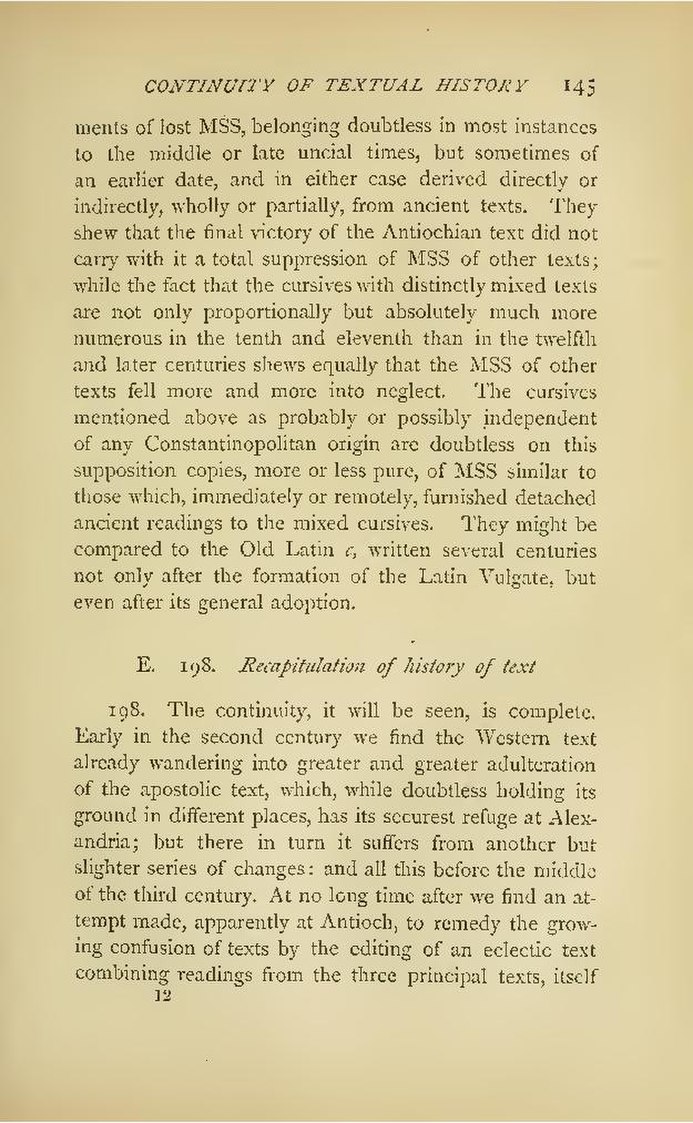ments of lost MSS, belonging doubtless in most instances to the middle or late uncial times, but sometimes of an earlier date, and in either case derived directly or indirectly, wholly or partially, from ancient texts. They shew that the final victory of the Antiochian text did not carry with it a total suppression of MSS of other texts; while the fact that the cursives with distinctly mixed texts are not only proportionally but absolutely much more numerous in the tenth and eleventh than in the twelfth and later centuries shews equally that the MSS of other texts fell more and more into neglect. The cursives mentioned above as probably or possibly independent of any Constantinopolitan origin are doubtless on this supposition copies, more or less pure, of MSS similar to those which, immediately or remotely, furnished detached ancient readings to the mixed cursives. They might be compared to the Old Latin c, written several centuries not only after the formation of the Latin Vulgate, but even after its general adoption.
E. 198. Recapitulation of history of text
198. The continuity, it will be seen, is complete. Early in the second century we find the Western text already wandering into greater and greater adulteration of the apostolic text, which, while doubtless holding its ground in different places, has its securest refuge at Alexandria; but there in turn it suffers from another but slighter series of changes: and all this before the middle of the third century. At no long time after we find an attempt made, apparently at Antioch, to remedy the growing confusion of texts by the editing of an eclectic text combining readings from the three principal texts, itself
12
